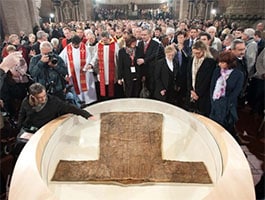 A tunic is a garment that is characterized by its length and breadth. This vestment, of great antiquity, covers from the neck to the legs .
A tunic is a garment that is characterized by its length and breadth. This vestment, of great antiquity, covers from the neck to the legs .
It is important to mention that the term can refer to different garments that have similar characteristics. The clothing that certain religious people wear underneath their habits is called a tunic, as is the toga or cassock that was used in ancient times as a shirt .
In the time of the Roman Empire , for example, the tunic was worn as underwear . Both women and men turned to this product, which adjusted to the body. In Ancient Greece , meanwhile, they also had various types of tunics.
Already in the Middle Ages , it was possible to find tunics of varying length and with or without sleeves. There were silk tunics , linen tunics and wool tunics , among others, ornamented with different decorations.
Currently the use of the tunic is limited. It is generally part of the religious clothing . For the Catholic religion , in fact, the tunic has great historical and symbolic importance: the Virgin Mary is represented with a red tunic under the blue mantle, while the garment worn by Jesus before his death is known as the Holy Tunic. crucifixion.
Just as mentioned above, the tunic was not the outer garment, but was worn by Jesus under others, before being stripped naked to be tortured and ultimately killed. The Catholic Church considers the Holy Tunic and the attack that consisted of removing Jesus' clothes as important symbols of its doctrine .
It is worth mentioning that currently there is more than one relic that could be the clothes that Jesus wore before the crucifixion. They are found in France, Russia and Germany , and their validity is supported by different traditions that try to explain the reason they arrived there. For its part, the Church allows the faithful to venerate them as elements that represent the Christian religion, although it has never ensured that they are authentic pieces.
 This worship should not focus on the object itself, but should be understood as a painting or sculpture, which evokes the image of Jesus. Since the Middle Ages, the veneration of the Holy Tunic, as well as the sites where its supposed relics were deposited, took place in a series of pilgrimages that continue to take place even today.
This worship should not focus on the object itself, but should be understood as a painting or sculpture, which evokes the image of Jesus. Since the Middle Ages, the veneration of the Holy Tunic, as well as the sites where its supposed relics were deposited, took place in a series of pilgrimages that continue to take place even today.
In the gospel of John, there is the only passage in the Bible in which the Holy Tunic is mentioned . There it is said that the soldiers divided Jesus' clothes into four after having crucified him, and that each one kept a piece, but that they decided to leave the tunic intact and cast lots for it, so that one of them would take it.
Today, therefore, it is not known with certainty which of the postulated tunics is authentic , or even if any of them are. However, for the Church it is not as important to solve this mystery as to venerate the symbol it represents. One of the most important characteristics of this garment is that it has no seams, which is why Christian tradition has considered it an allusion to the unity of the Church .
Tunica, on the other hand, is the name of a thin membrane that covers certain areas of the human body. In addition, it is a membrane present in certain animals and a type of film that protects the flesh of some fruits.
